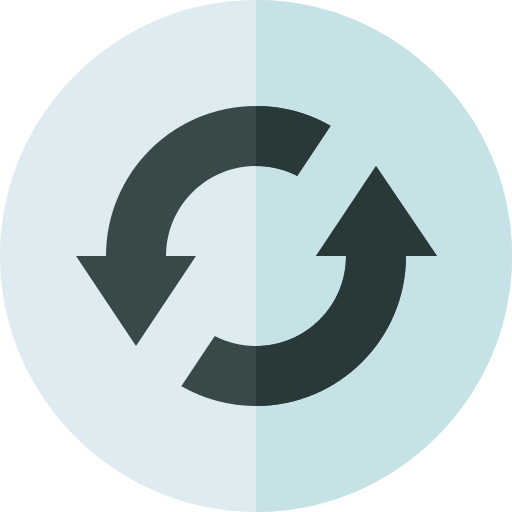Key Trends in Healthcare Software Development for the Future
The Healthcare System has implemented cutting-edge technology, making patient care and consultations quicker and more timely. It resulted in a massive shift in how organizations care for their patients in remote places and at home in the quickest possible way.
With the help of healthcare software development, the healthcare system has undoubtedly become more modern. According to the survey, online telehealth appointments and remote care make people more pleased and at ease.
Healthcare software development trends are assisting organizations in achieving goals and are constantly evolving to impact patient care in the future. Here are the significant future trends in healthcare development.
Artificial Intelligence (AI) Healthcare Technology
The use of machine-learning algorithms and software in the healthcare system has become a trend, assisting companies in health analysis presentation, obtaining medical health data, etc., exceeding human capacities by providing new ways of delivering diagnosis, treatment, and illness prevention.
AI can deliver approximation conclusions based on patient input data, primarily analyzing connections between medical data and patient results.
Using Artificial Intelligence in healthcare can help medical companies in many ways, such as;
Accelerating Diagnosis Process
AI CT imaging will allow professionals to spot ailments such as pneumonia and cancer more promptly. AI tools that administer 3D contouring and speed up decision-making, especially drug supplements, to each patient for fast treatment.
CollaborateMD cloud-based medical billing software can utilize AI to examine patient trends. With this information to fall back on, medical professionals will know what’s been tried and what works for each patient, thus speeding up diagnostics.
Hospital Workflow Automation
Robotic technologies, such as automated systems or virtual bots, make medical workflows more efficient and accurate by replicating human capabilities through user interfaces (UI).
It will lower the cost of human labor and supplement existing procedures such as remote diagnostics, surgery, and others, allowing medical professionals to save time and focus on critical responsibilities. Even something as simple as automating your online medical forms can help you carve out more time for patient care.
Another critical development for hospital efficiency is the integration of electronic medication administration records (eMAR). These systems work to simplify medication distribution with eMAR, ensuring accurate dosage and timely delivery, thus reducing medical errors.
Similarly, healthcare credentialing software plays a vital role in maintaining operational efficiency by automating the verification of medical staff credentials, licenses, and certifications. By ensuring that all providers meet compliance standards, hospitals can reduce administrative burdens and minimize the risk of credentialing errors that could impact patient safety.
Implementing eMAR within hospital systems can drastically improve workflow by automating and streamlining the medication administration process, allowing healthcare professionals more time to focus on patient care.
Chatbot Symptom Checkers
All chatbots can diagnose health concerns quickly and conveniently without requiring patients to leave their homes. It enables home patients to receive this assistance any time of day or night via mobile apps or an internet connection.
VIR was created by combining chatbot technology with Artificial Intelligence to assist patients and professionals in diagnosing.
Telemedicine
Telemedicine is integral to the healthcare system since it provides patients and professionals with convenience and rapid clinical advice and treatment without requiring them to attend clinics or hospitals.
This service includes patient monitoring, which allows medical experts and patients to communicate quickly over the Internet.
It allows patients to get healthcare services via phone or virtual calls, which is less expensive than visiting a hospital or seeing a healthcare expert.
The following are the advantages it delivers to patients and practitioners:
1. Telemedicine allows patients who do not have time to visit or are unable to drive to see physicians to get medical advice or treatment from the comfort of their own homes.
2. It addresses infectious diseases like the flu and others. Pregnant women, elderly individuals, and chronically ill people are all safe.
3. Through virtual calls, medical personnel may see your surroundings. Physicians can observe you and find remedies; for example, if you have an allergy, they may search for clues in your environment.
Another benefit of Telemedicine is that it can provide mental health assistance and therapy.
Wearable Technology and Internet of Things Devices
IoT devices and wearable technology are medical health system trends that are critical for accurate diagnosis, treatment, and illness prevention.
Wearable technology refers to technologies worn on the patient's body, such as hearing aids, VR headsets, smartwatches, skin patches, etc.
Other wearable devices have sensors that can help clinicians diagnose, treat, and collect patient data. Partnering with a medical software development company can ensure that healthcare providers leverage these technologies efficiently and securely. Healthcare application developers can use patients' data to give more specific care.
Biosensors are used in medical technologies to obtain precise data from patients. It can measure glucose, cholesterol, heart rate, medications, etc. There are two types of biosensors:
Photodiode Sensor: It turns light into electrical energy, which is then converted into usable data and delivered to the user.
CMOS Sensors: They can accurately diagnose heart problems such as atrial fibrillation.
These health monitoring devices are future technologies that collect patient data that may be quickly and precisely transferred to physicians for research, diagnosis, and treatment.
AR and VR
Today and in the future, augmented and virtual reality are transforming healthcare systems. These advancements can make diagnosis more accurate and interactive in medical education and training.
These technological improvements make medical X-rays, imagery, and scans more intuitively visible, helping medical practitioners to make better, more informed decisions.
One example is the AccuVein scanner, which uses AR to create NIR technology to assist nurses and physicians in correctly finding the most centered vein for blood taking.
Conversely, VR simulates complex surgical operations, allowing physicians to master the process before doing it on a patient. It helps avoid surgical errors and creates visual images for analysis and research.
These can improve healthcare processes by making them more precise and faster, cutting errors and costs, and providing more effective learning for professionals and students.
Nanomedicine
Nanomedicine is the most significant future software development that employs nanotechnology to detect symptoms, treat, prevent cancer, and improve diagnostics. This innovation has several clinically tested products that cover all severe ailments, such as neurological, cardiovascular, and others.
This year, nanomedicine advancements in diagnosis, medication delivery, and even the treatment of damaged organs and tissues.
Here are some examples of nanotechnologies:
● Nanobots were produced and inserted into human blood veins to search for cancer cells or viruses.
● Nanofibers or carbon nanotubes are used to repair damaged tissues and organs.
Nanomedicine changes healthcare systems, potentially assisting with today's complex healthcare concerns.
Conclusion
Wearable technology, IoT devices, Telemedicine, and other significant trends in healthcare software innovations have appeared in the healthcare system today and will continue to assist medical professionals and patients in the following years.
These advancements benefit humanity by allowing for faster diagnosis, treatment, prevention, and patient care, all of which save lives.
Technological advancement benefits patients and practitioners by reducing time, saving money, and increasing productivity. Furthermore, it decreases surgical errors, ensuring patients in remote places receive rapid and effective care.
Healthcare providers and organizations should invest in innovative tools to meet industry goals to provide comprehensive care.



